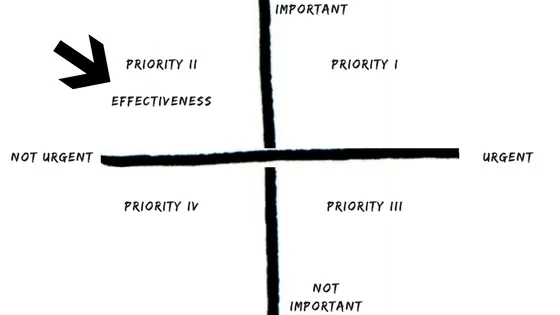

Living the Right Box

We have so much to do during the day from the time we get up in the morning that we often fall prey to the situation. But how? With many activities that are lined up to do, we usually tackle activities and tasks as they come to us and look forward to complete them. To handle it efficiently, some of us even make use of to-do lists, on paper or apps. Well, this is all part of the reactive planning method, which essentially means that you handle tasks as they come. But it has some serious disadvantages, if you are looking to be successful and happy.
A major disadvantage is that there are a lot of distractions in whatever you do. This is because when you are handling one activity and another activity arrives, you are compelled to react to it by doing something about it and then the third one arrives. You lose focus on the work at hand. Secondly, you may have completed a lot of tasks and spent time and energy on them but you still don’t feel accomplished and satisfied with what you have done. Thirdly, lack of control and cohesion over your activities makes you feel cluttered and gives you a feeling of ‘lack of time’.
However, the good news is that you can improve upon it if you want. Your ability to role play as a worker and your own manager is a key technique to effectively manage your time. At the start of the day or the night before, imagine you are the manager and have to assign tasks to this person. Plan out to assign him tasks on the basis of importance. But how do you decide the importance? Use the well-known Dwight D. Eisenhower’s Decision Principle or as many people know ‘Covey’s Time Management Grid’. This principle was first used by an effective leader, Army General and 34th President of The United States which was later popularized by Stephen Covey. Essentially, it explains that there are four boxes or quadrants in the urgent-important matrix.
“What is important is seldom urgent and what is urgent is seldom important.” – Dwight D. Eisenhower
The words, urgent & important are often confused in our everyday lives. Just to reiterate, urgent activity is something that cannot wait and requires immediate attention while important activity is something which has a high consequence of not doing it but it may not require immediate attention. Using this approach separates the successful from the rest of the crowd, gives a perspective to your actions and makes your proactively handle tasks.

What does living in Box 1 mean?
This box represents problems or crisis situations which are important and urgent. Living in this box means handling problems all day and everyday, meeting deadlines and sitting on fire, almost all the time.
Take Action – “Do it immediately”.
What does living in Box 2 mean?
Activities which are not urgent but important, usually represent personal goals. These are things we should do in order to succeed but we never get time to address them. These may include long term strategizing, building relationships, health care, starting and working on our own venture and so on. This is the most goal oriented and productive box.
Take Action – “Decide when you will do it”
What does living in Box 3 mean?
Activities in this box are urgent but not important. These are often misinterpreted in our everyday lives as important. Individuals living in this box spend time fulfilling others priorities and expectations. Activities in this box can be described as distractions.
Take Action – “Do it later”
What does living in Box 4 mean?
The box has activities which are not important and not urgent such as surfing web, scrolling through social media, watching TV, etc. These are usually time wasters and is the most unproductive box of the quadrant.
Take Action – “Delegate to someone or eliminate”
It is not possible to live in one box in isolation but my questions to you are:
1. Which box are you currently living in, most of your time?
2. Which box do you want to live in, most of your time?
Please share your comments and opinion. I’d love to hear them
If you like what you just read, please hit the Like & Share Button so that others may stumble upon this.
The article was originally published here on 27th April 2017.





